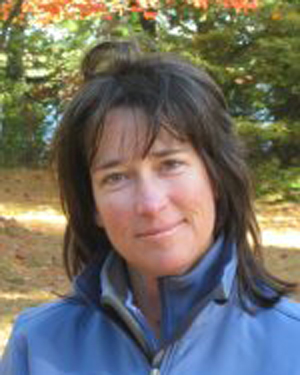Jill Johnson
People You Should Know: Jill Johnson

Jill Johnson
U.S. Forest Service’s Urban Forestry Coordinator
Jill Johnson is the U.S. Forest Service’s Urban Forestry Coordinator for the seven Midwestern states. She works with her colleagues around the country to help State forestry agencies, universities, non-profit organizations, and communities meet common urban forestry goals. She works to find better ways to get new information and innovation into the hands of those who can use it. Jill has a Bachelors and Masters degree in urban forestry from the University of Wisconsin -Stevens Point.
Before assuming her current position, she worked for the University of Vermont Extension Service and American Forests, a national non-profit organization in Washington, DC.
1) What projects are you currently working on that would involve Iowa's trees?
- We will be updating the Tree Owner’s Manual and translating it to Spanish. There is new research on planting practices that we would like to include in the revision.
- We are also working to improve storm preparedness and response. By developing a combination of trainings, materials, and programs we hope to help communities prepare for and rebound from storm events quickly and with the greatest financial assistance available.
2) How long have you been at your current job? What consumes most of your time there?
- I have been with the Forest Service for ten years. My job has changed quite a bit during that time, and right now I work primarily on grants management and communication. I admit, this does not sound exciting, but seeing the great work resulting from the grants that the Forest Service provides to organizations for urban forestry programs and projects is very rewarding. Currently in Iowa there are urban forestry grants to the Iowa Department of Natural Resources and Trees Forever. Aside from grants, I spend quite a bit of time scanning scientific articles and newsletters for information that may be useful to urban foresters and arborists in the Midwest. Whatever I find I pass along to key contacts in each state to share with their networks.
3) Are there any areas in Arboriculture that you think we need to focus more of our time on? I.e. tree id, planting practices etc.
- Design, digging, development, detection, and documentation. I am a big believer in big trees. They provide the greatest amount of benefit for the least cost over their lifetime. To get big trees in our built environments it is critical that arborists are involved from design to death. I think arborists are keenly aware of this, but the rest of the world is not. So I believe arborists need to be very proactive in getting involved early and often during a tree’s life. Actively advertise the need for and availability of lifelong services.
- Design: Arborists who are knowledgeable about both the below- and above-ground requirements of trees throughout their life will be invaluable during the design phase—in advocating for space that will support big trees and in selecting appropriate species. Equally as important is understanding and getting involved when construction is slated to occur near existing trees worthy of saving.
- Digging: I think that planting practices continue to be an issue which will just lead to early replacement instead of long-term nurturing and care. Continued understanding of the latest research in planting practices and being involved in either planting or writing planting specifications will help ensure that trees get off on the right foot. Additionally, this will help when evaluating health issues later in the tree’s life.
- Development: After planting, arborists are often forgotten until tree owners feel that their tree needs to be pruned because the limbs are “in the way” or are dropping in the yard. It would be great if arborists could be involved earlier in the life of the tree to help with formative pruning.
- Detection: Early detection of health issues and hazards will maximize the chance for correction instead of removal. Again, this requires a fairly frequent contact with the trees being cared for. In some cases, early detection and treatment (even if removal) will save many other trees from an early death. Documentation: Finding efficient ways to record and track actions performed on trees can help with identification of maintenance needs, risk assessment, and health evaluation.
4) Are there any books on your shelf at work that you simply could not do with out?
- Because I am still learning the ISA’s new process for risk assessment, I could not live without:
"Best Management Practices: Tree Risk Assessment" by E. Thomas Smiley, Nelda Matheny, and Sharon Lilly
- And my standard favorite references:
"Arboriculture: Integrated Management of Landscape Trees, Shrubs, and Vines" by Richard Harris, James
Clark, and Nelda Matheny
"Manual of Woody Landscape Plants" by Michael Dirr
Jill Johnson
Midwest Urban Forestry Coordinator
U.S. Forest Service
St. Paul, MN